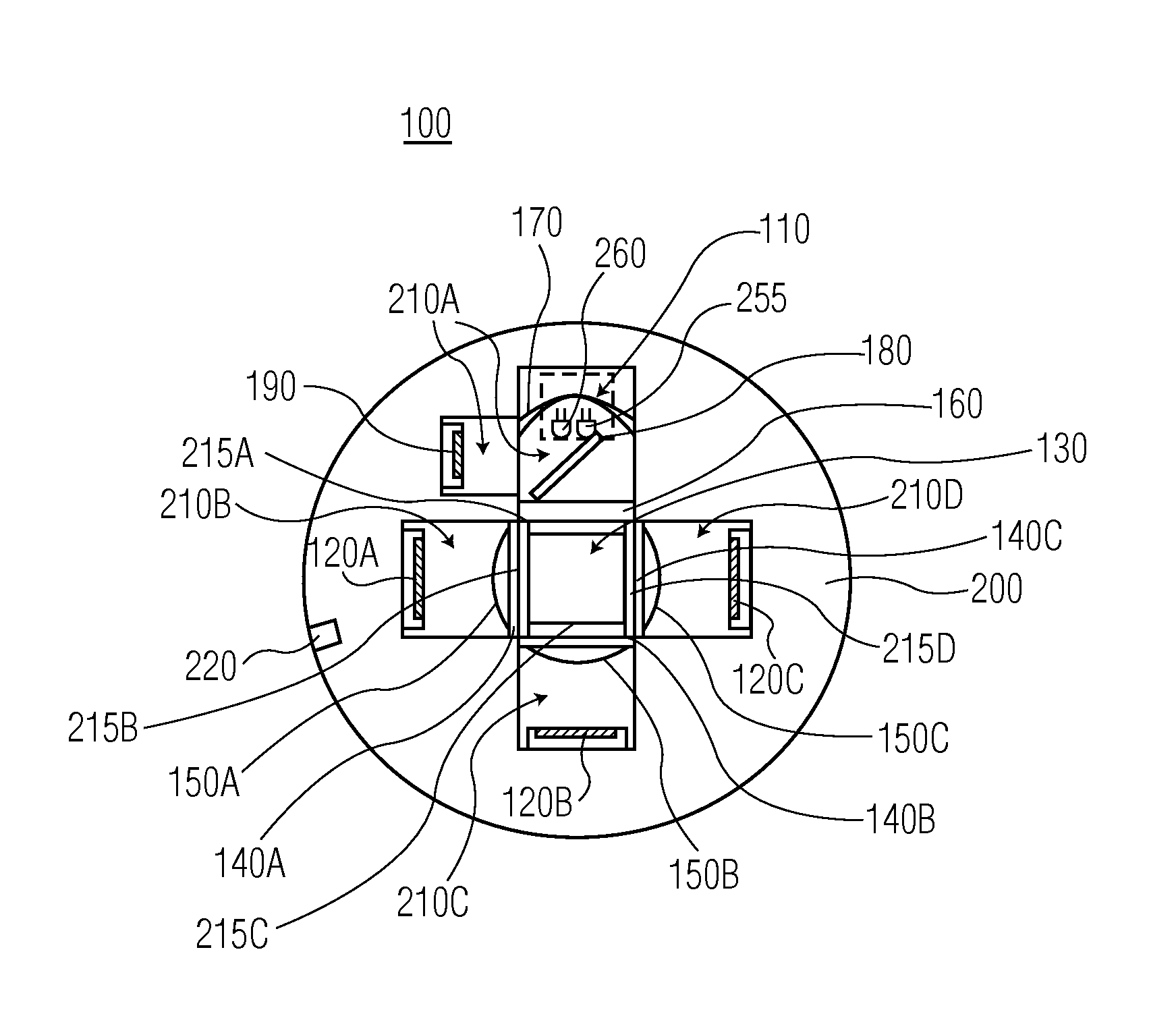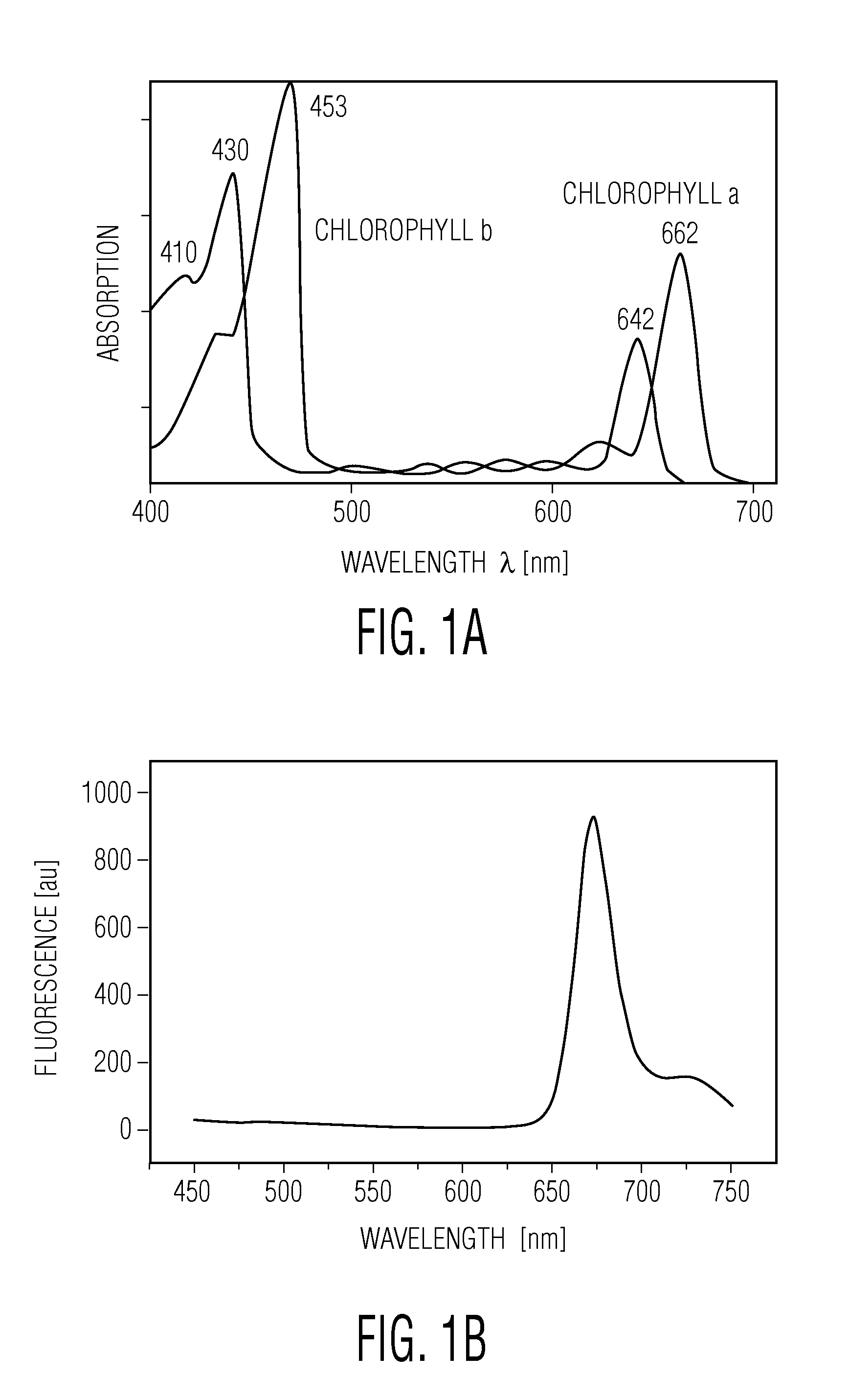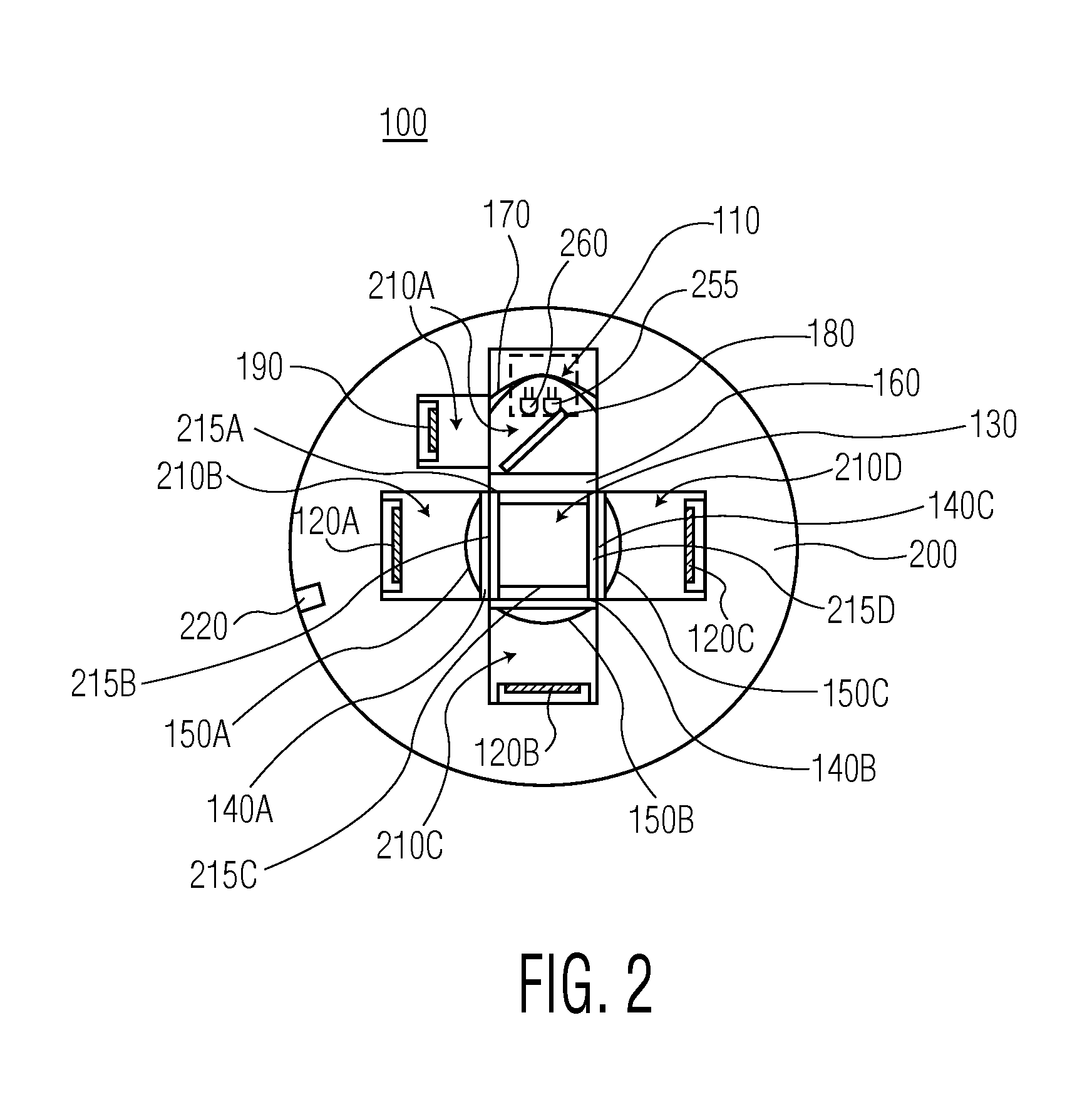Chlorophyll and turbidity sensor system
a chlorophyll and turbidity sensor technology, applied in the field of environmental parameters monitoring, can solve problems such as endanger the equilibrium of the ecosystem
- Summary
- Abstract
- Description
- Claims
- Application Information
AI Technical Summary
Problems solved by technology
Method used
Image
Examples
Embodiment Construction
[0017]The description below cites numerous technical references, all of which are incorporated by reference herein in their entirety.
[0018]The present invention provides a low cost sensing system that can measure both chlorophyll concentration and turbidity. The present system is useful for monitoring the health of coastal areas and ecosystems. Alternatively, the present system may be utilized for measuring both chlorophyll concentration and turbidity in bioprocessing systems such as bioreactors, preferably bioreactors used for the cultivation of plant cells, such as algae.
[0019]Generally, there are two methods for measuring chlorophyll, both of which are based on the absorbance and fluorescence of chlorophyll A. As shown in FIGS. 1A and 1B, the concentration of Chlorophyll A can be measured either by its absorption peaks at 430 and 680 nm (662 nm in acetone solution) or its fluorescence at 683 nm (excitation at 470 nm) (Krause G H, Weis E.; Chlorophyll fluorescence and photosynthes...
PUM
| Property | Measurement | Unit |
|---|---|---|
| output power | aaaaa | aaaaa |
| cutoff wavelength | aaaaa | aaaaa |
| output power | aaaaa | aaaaa |
Abstract
Description
Claims
Application Information
 Login to View More
Login to View More - R&D
- Intellectual Property
- Life Sciences
- Materials
- Tech Scout
- Unparalleled Data Quality
- Higher Quality Content
- 60% Fewer Hallucinations
Browse by: Latest US Patents, China's latest patents, Technical Efficacy Thesaurus, Application Domain, Technology Topic, Popular Technical Reports.
© 2025 PatSnap. All rights reserved.Legal|Privacy policy|Modern Slavery Act Transparency Statement|Sitemap|About US| Contact US: help@patsnap.com



